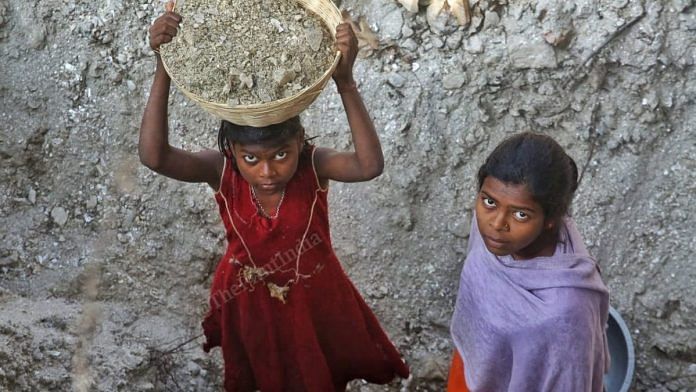Almost 1 in every 10 children is a victim of child labour worldwide and another 9 million are at risk as a result of the COVID-19 pandemic: these are the headline figures from a sobering new report.
Progress in the global fight against child labour has stalled for the first time in two decades, it finds, putting the international community’s goal of ending child labour by 2025 at risk.
The study from the International Labour Organization (ILO) and UNICEF, Child Labour: Global estimates 2020, trends and the road forward, shows a sharp rise in children aged 5 to 11 years being forced to work over the past four years. More and more children are also being pushed into jobs that are extremely harmful to them.
These findings are described as an important reality check, and the report urges the world to act now on an unprecedented scale. It points to a series of actions that could help reverse the trend.
At the beginning of 2020, 160 million children worldwide – 63 million girls and 97 million boys – were in child labour. Nearly half of them – 79 million – are performing hazardous work, defined as “likely to harm their health, safety or morals”.
Between 2016-2020, the number of children in child labour rose by more than 8 million – reversing the downward trend since the year 2000. And 6.5 million children were recorded as participating in hazardous work over that four-year period, showing a significant decline in the global fight to end child labour.
Globally, there has been an increase in child labour in sub-Saharan Africa; right now, there are more children in child labour there than the rest of the world combined. In contrast, Asia and the Pacific, Latin America and the Caribbean have seen a steady decline in child labour since 2008.
Some other key findings in the report are:
· Child labour is more common in boys than in girls at every age.
· Child labour is much more common in rural areas.
· Over 70% of child labour is in agriculture.
· More than 70% of all child labour happens within families.
Also read: Covid has devastated India’s self-employed women
Effects of the COVID-19 pandemic
Nine million more children are at risk of being pushed into child labour by the end of 2022 as a result of the pandemic, according to the report. This number could rise to 46 million if immediate action isn’t taken.
The report says there is evidence that job losses due to the COVID-19 pandemic are pushing families to turn to child labour for income. School closures also mean that children may be working longer hours or in worse conditions.
Also read: Facebook launches new initiative to tackle child abuse content, two days after NCPCR notice
Tackling child labour
The ILO and UNICEF recommend five actions to put progress back on track. These are:
1. Increased social protection for all, including universal child benefits.
2. More free quality schooling to get children back into school.
3. More work for adults so that parents won’t have to rely on children to help increase a family’s income.
4. An end to harmful gender norms and discrimination that increase child labour.
5. Investment in structures and systems including child protection, agricultural development and public services in rural areas.
“We urge governments and international development banks to prioritize investments in programmes that can get children out of the workforce and back into school, and in social protection programmes that can help families avoid making this choice in the first place,” says Henrietta Fore, UNICEF Executive Director.
This article was originally published in The World Economic Forum.
Also read: Child labour, mine deaths — Rihanna’s Fenty Beauty brings Jharkhand mica back under spotlight



